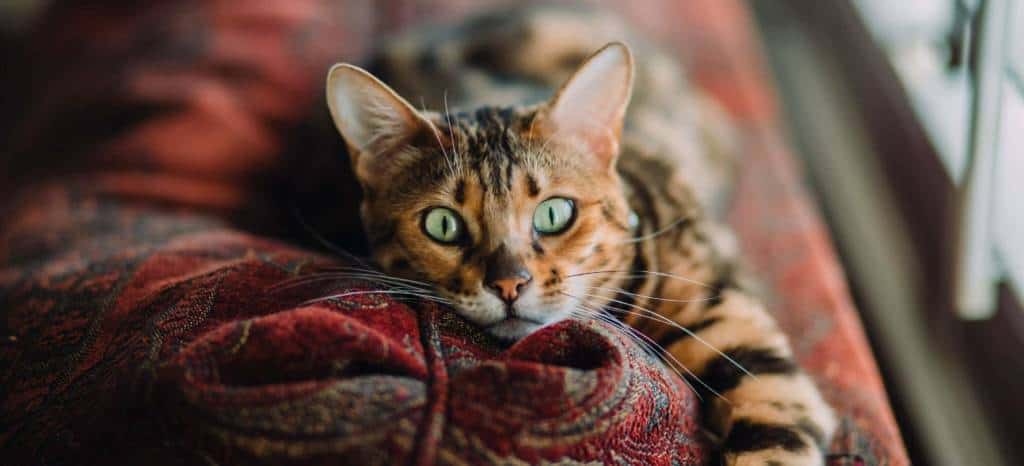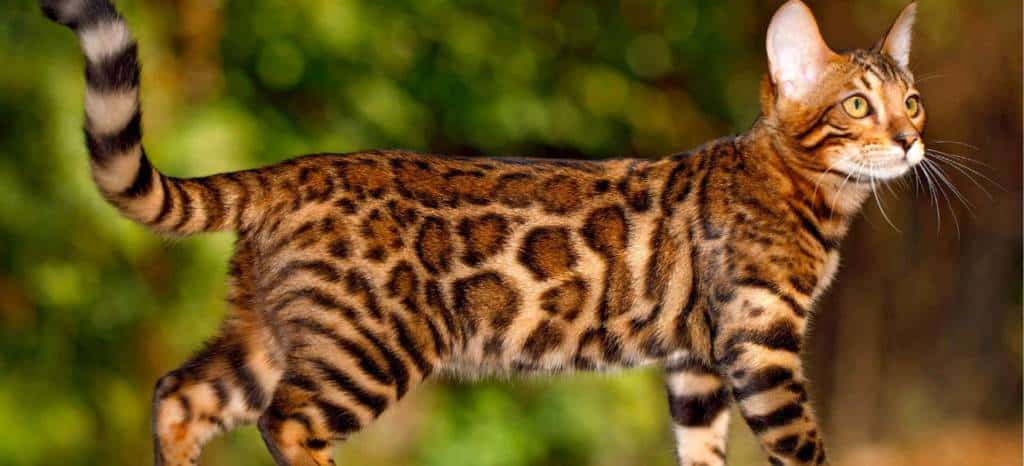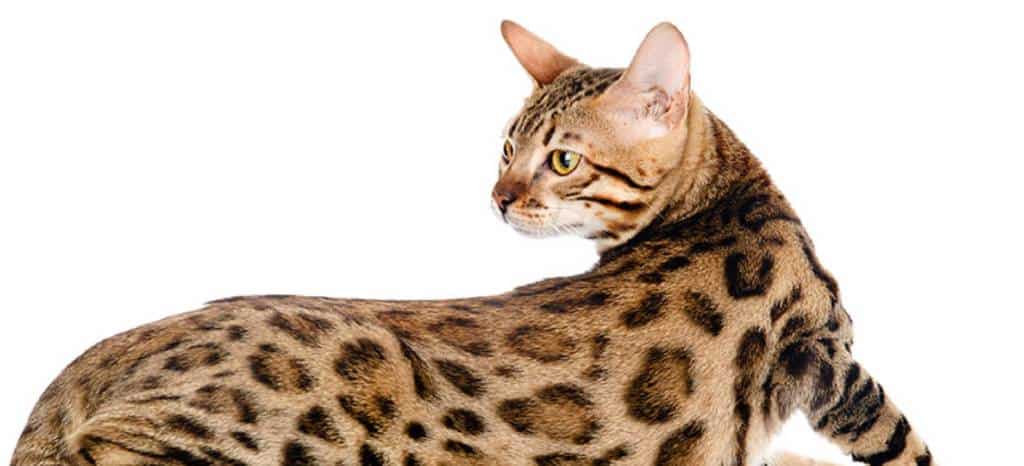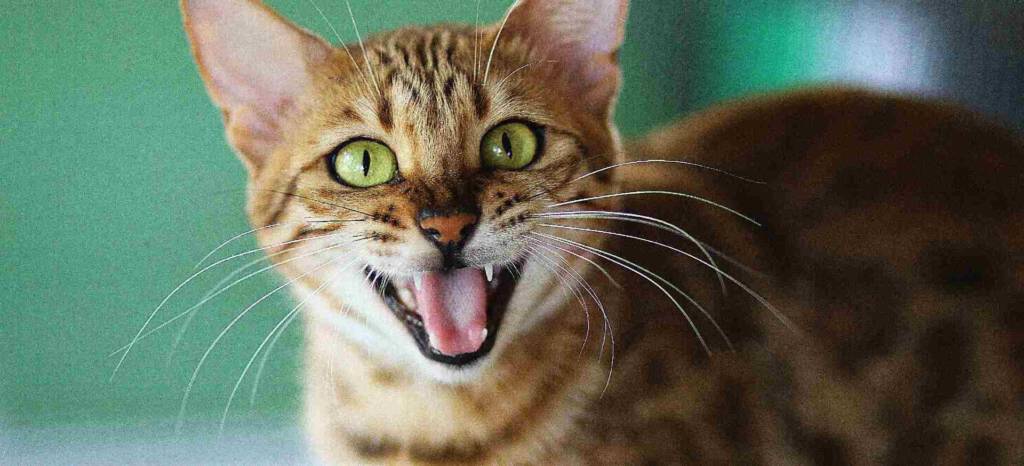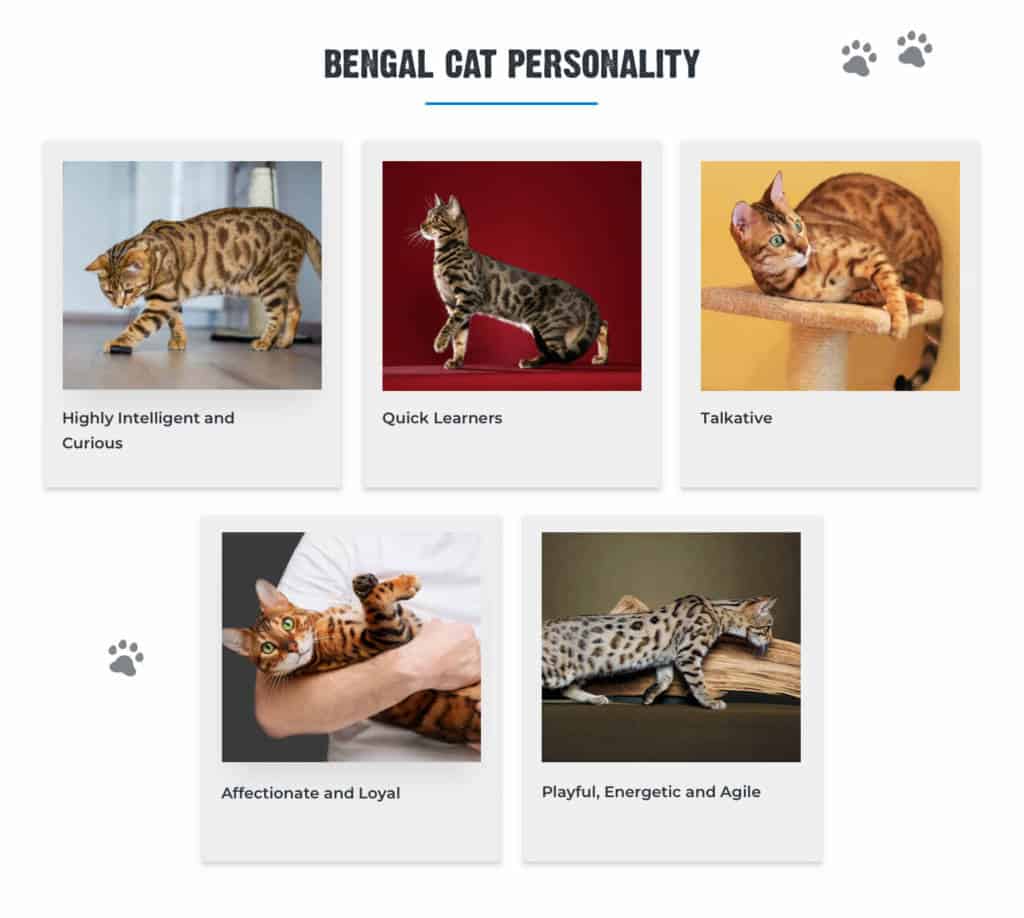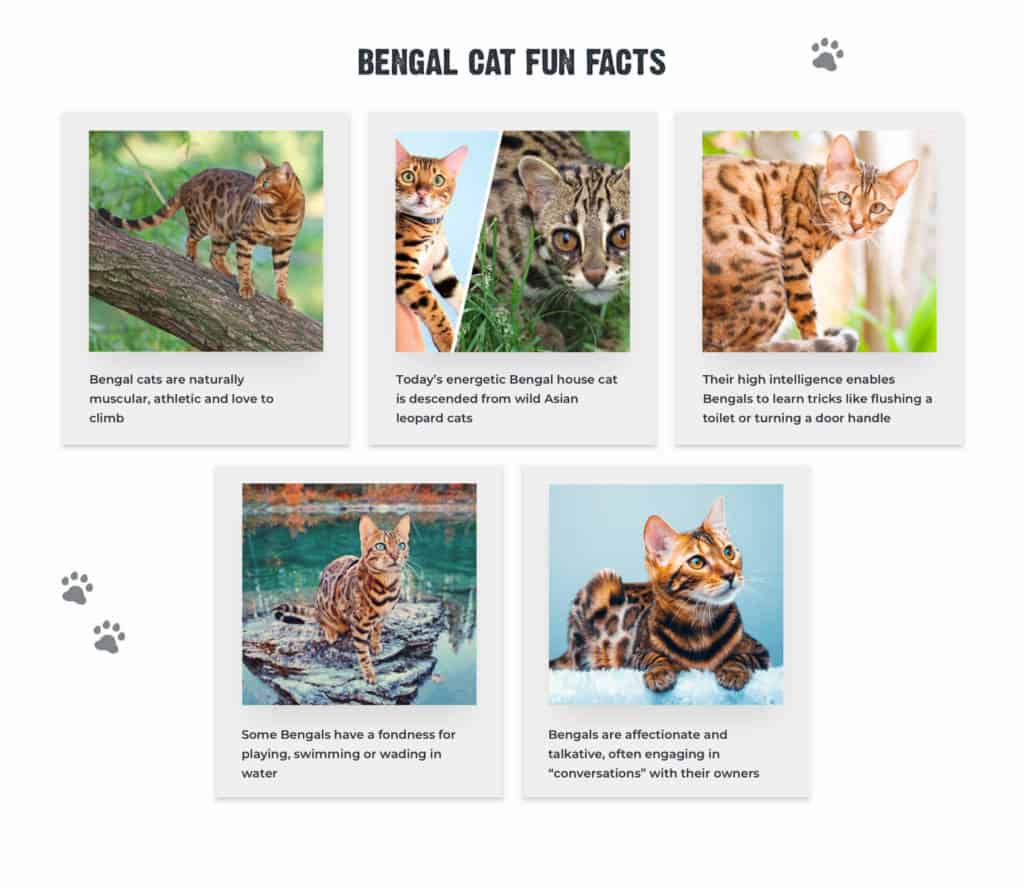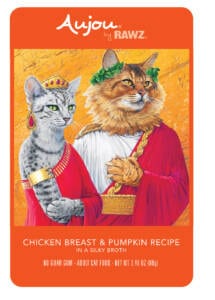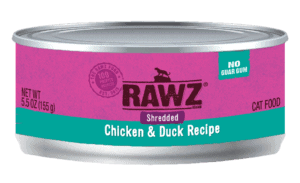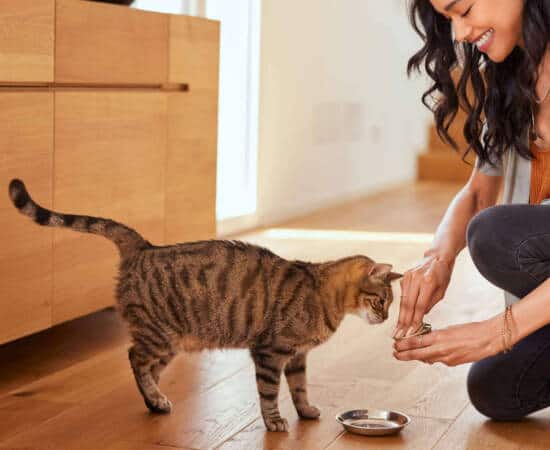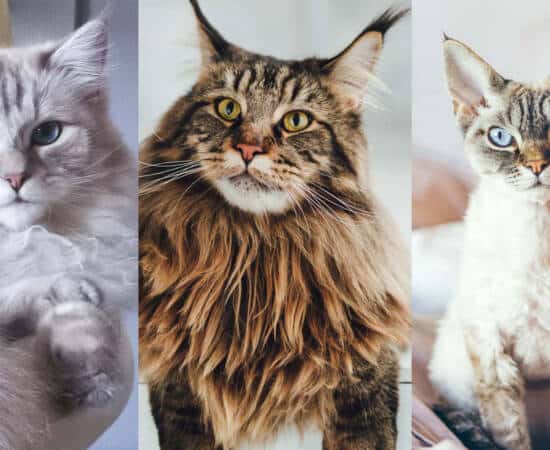Bengal Cats: Facts & History Behind the Breed
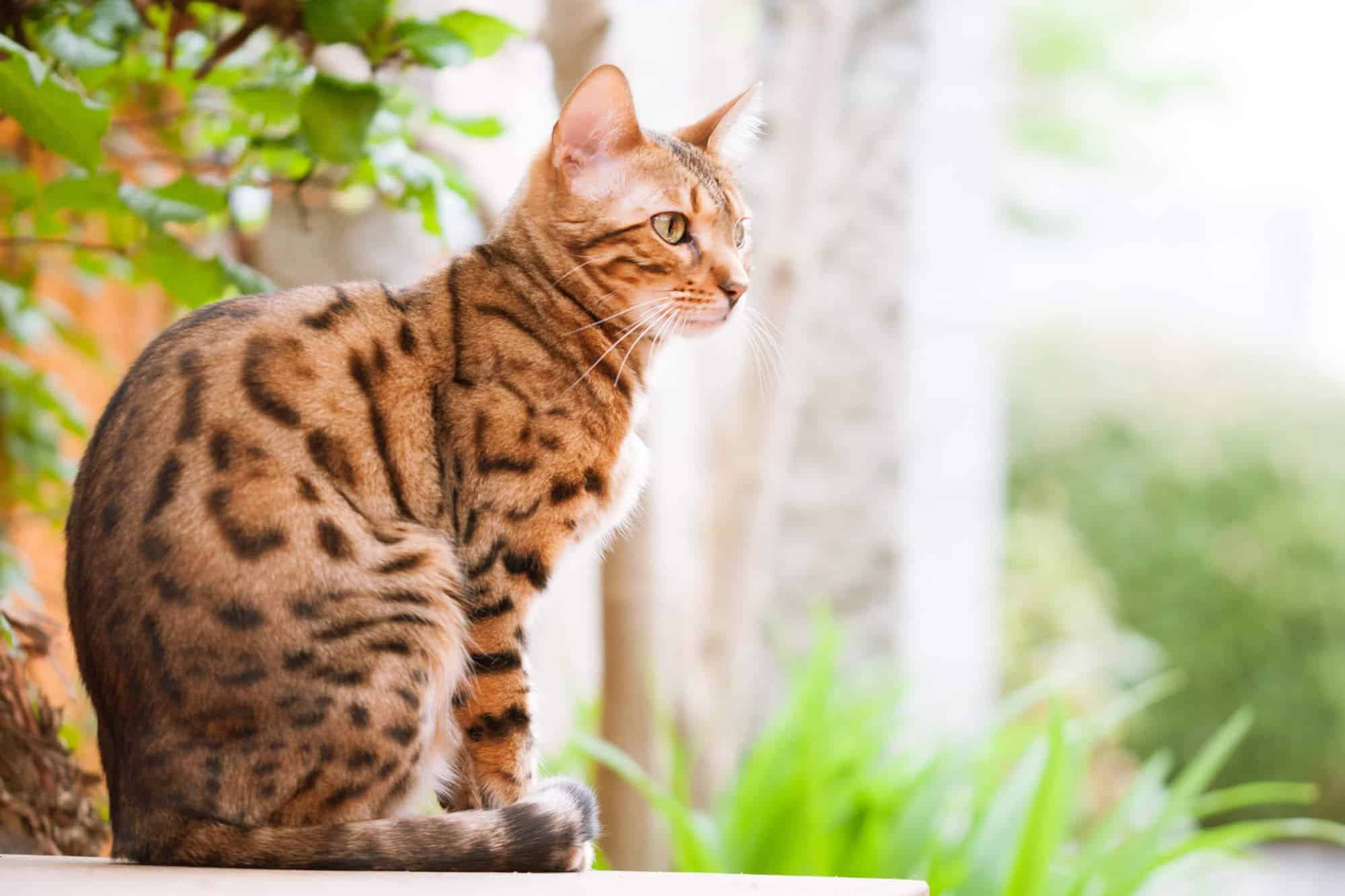
If you’ve ever wanted your own miniature leopard, a Bengal cat might just be the breed for you. These cats were bred to blend the beautiful wild appearance of an actual leopard with the domesticated demeanor of a house cat. Read on for more details about the breed.
The History of Bengal Cats
Bengals are a hybrid cat breed. In the early 1900s, breeders crossed domestic felines with Asian leopard cats, a small, wild species native to Southeast Asia. Asian leopard cats — also known as Felis bengalensis, which is where “Bengal” comes from — are known for having a slender build and wild appearance.
While the breed crossings began more than 120 years ago, the actual Bengal species wasn’t established until the 1970s when Jean Sugden Mill bred the Asian leopard cat hybrids with domestic cat breeds. Her goal was to produce a breed that stayed true to the exotic appearance of the Asian leopard cat, with the personality of a domestic house cat.
Today, Bengal kittens are bred from other Bengals and they are several generations removed from their exotic ancestors. They are now one of the most expensive cat breeds — a show-quality Bengal can cost up to $2,000.
Appearance
Bengals are known for their jungle cat looks and iconic markings. Their muscular bodies and long hind legs give them a powerful stride, and their sleek coats and round-tipped ears are a direct reflection of their wild ancestors. While their leopard-like appearance is a standard trait of the breed, Bengals can have variations when it comes to coat color and eye color.
Coat Color
Bengals have soft, sleek and easy-to-groom coats. They can have spotted or marbled coat patterns in standard colors like brown, snow and silver, as well as non-standard colors like charcoal, blue and melanistic (solid black). Snow Bengals have ivory or cream-colored coats. This is the result of a form of albinism, which comes from their Siamese and Burmese history.
Some Bengals may even have glittery coats, which is the result of translucent hollow hair that catches and reflects light. This gives the entire coat a shimmering effect, and you can even notice it in low lighting.
Eye Color
Bengals have almond-shaped eyes that can be different shades of hazel, brown, green, gold or copper. Snow Bengals can have blue, blue-green or aqua-colored eyes.
Biology & Health
Bengal cats are generally healthy, but there are a few notable diseases that have been seen throughout the breed:
- Distal Neuropathy: A nervous system disorder that can cause weakness.
- Flat-Chested Kitten Syndrome: This is a deformity that ranges from mild to severe. If the cat survives to adulthood, they usually show no signs of the condition.
- Hip Dysplasia: While common in some large dog breeds, Bengals can also suffer from hip dysplasia that can cause lameness.
- Hypertrophic Cardiomyopathy: This is a form of heart disease.
- Patellar Luxation: This is a hereditary dislocation of the kneecap. Severe cases can be treated with surgery.
- Progressive Retinal Atrophy: A degenerative eye disease.
Weight Range
Since they are long and muscular, Bengals can appear to be larger than their actual weight suggests. Bengals are actually a medium-sized breed — females can weigh as little as 6 lbs. and males can be closer to 15 lbs.
Since Bengals have high energy levels, they are often able to burn off excess calories to maintain a healthy weight. However, it’s important to feed your Bengal high-quality cat food with minimally processed ingredients to make sure they stick to a healthy diet that stays true to their obligate carnivore needs.
Life Expectancy
CatTime lists the average lifespan for a Bengal cat as 10 to 16 years. However, this will depend on many factors such as the cat’s overall health and whether they are an indoor or outdoor cat.
Personality
Don’t let their wild appearance fool you; Bengal cats can be just as friendly and loving as other domestic breeds.
These cats are fiercely loyal to their humans, but like any active breed they aren’t big fans of being restrained or held. Their high intelligence means you may be able to train them to do difficult tricks, like using and flushing the toilet.
With their strong, muscular bodies, Bengal cats are highly athletic and bursting with energy. They love to climb and are even known for enjoying the water. You’ll want to make sure your Bengal has a tall cat tree as well as toys that will exercise both their mind and body.
Fun facts about Bengal Cats
Frequently Asked Questions
Q: Are Bengal cats hypoallergenic?
A: “There is no such thing as a completely hypoallergenic cat,” as explained by PetHelpful. With that said, Bengal cats shed less than other breeds, so the allergy effects may be minimal in comparison.
Q: Do Bengal cats get along with children and other pets?
A: According to CatTime, “The active and social Bengal is a perfect choice for families with children and cat-friendly dogs.” However, it’s best to keep smaller pets that could be considered prey (hamsters, rabbits, guinea pigs, etc.) out of sight.
Intrigued by Bengal cats? You might also enjoy learning about these kitties:
